Acoustic sensors enable efficient and non-invasive monitoring of a wide range of species, including many that are difficult to monitor in other ways. Although they were initially limited in application scope largely due to cost and hardware constraints, the development of low-cost, open-source models like the Audiomoth in recent years has increased access immensely and opened up new avenues of research. For example, some teams are using them to identify illicit human activities through the detection of associated sounds, like gunshots, vehicles, or chainsaws (e.g. OpenEars).
With this relatively novel dimension of wildlife monitoring rapidly advancing in both marine and terrestrial systems, it is crucial that we identify and share information about the utility and constraints of these sensors to inform efforts. A recent study identified advancements in hardware and machine learning applications, as well as early development of acoustic biodiversity indicators, as factors facilitating progress in the field. In terms of limitations, the authors highlight insufficient reference sound libraries, a lack of open-source audio processing tools, and a need for standardization of survey and analysis protocols. They also stress the importance of collaboration in moving forward, which is precisely what this group will aim to facilitate.
If you're new to acoustic monitoring and want to get up to speed on the basics, check out these beginner's resources and conversations from across the WILDLABS platform:
Three Resources for Beginners:
- Listening to Nature: The Emerging Field of Bioacoustics, Adam Welz
- Ecoacoustics and Biodiversity Monitoring, RSEC Journal
- Monitoring Ecosystems through Sound: The Present and Future of Passive Acoustics, Ella Browning and Rory Gibb
Three Forum Threads for Beginners:
- AudioMoth user guide | Tessa Rhinehart
- Audiomoth and Natterjack Monitoring (UK) | Stuart Newson
- Help with analysing bat recordings from Audiomoth | Carlos Abrahams
Three Tutorials for Beginners:
- "How do I perform automated recordings of bird assemblages?" | Carlos Abrahams, Tech Tutors
- "How do I scale up acoustic surveys with Audiomoths and automated processing?" | Tessa Rhinehart, Tech Tutors
- Acoustic Monitoring | David Watson, Ruby Lee, Andy Hill, and Dimitri Ponirakis, Virtual Meetups
Want to know more about acoustic monitoring and learn from experts in the WILDLABS community? Jump into the discussion in our Acoustic Monitoring group!
Header image: Carly Batist
No showcases have been added to this group yet.
- @roxirisa
- | roxi
Biologist I consider myself a data scientist with a passion for nature and with an extensive experience in species distribution modeling, handling large data sets from different sources such as gbif, eBird, xeno-canto, Worldclim, Terraclimate, ocean color e NASA among others. But
- 0 Resources
- 0 Discussions
- 9 Groups
Chief Marketing Officer 🌎 Building Transparency through Data & Storytelling

- 2 Resources
- 3 Discussions
- 8 Groups

- 0 Resources
- 0 Discussions
- 15 Groups
- @Sumit_Arora
- | He/Him/His
Centre for Wildlife Studies
Technology | Sustainability | Biodiversity
- 0 Resources
- 1 Discussions
- 4 Groups
Wildlife Bio in Yukon Territory Canada
- 0 Resources
- 1 Discussions
- 6 Groups

- 0 Resources
- 0 Discussions
- 13 Groups
- @kourtney.burger
- | She/Her
- 0 Resources
- 0 Discussions
- 4 Groups
Electronics Engineer working in the development of smart conservation technology solutions.

- 0 Resources
- 0 Discussions
- 9 Groups
Andigena ID+ es una empresa Colombiana dedicada a promover la conservación de la biodiversidad de manera integral a través de la investigación y el desarrollo.
- 0 Resources
- 0 Discussions
- 5 Groups
University of Suffolk
Researcher on the 8 Primates Project
PhD student- biodiversity monitoring using acoustic data


- 0 Resources
- 2 Discussions
- 9 Groups
Postdoctoral researcher at the University of Saskatchewan investigating biodiversity change in agriculture, primarily using bioacoustics.
- 0 Resources
- 4 Discussions
- 4 Groups
- @cbnatphoto
- | He / Him
Clay Bolt is the Manager of Pollinator Conservation for World Wildlife Fund-US and a conservation photographer focused on supporting policy that protects insects from pesticides and other threats. Clay’s words and images have appeared in publications such as National Geographic M
- 0 Resources
- 1 Discussions
- 3 Groups
Ol Pejeta Conservancy partners with conservation and technology organisations to kick-start a research and innovation centre for wildlife conservation
31 May 2019
In February, we released an open call for the WILDLABS TECH HUB, offering 3 months of support for solutions using technolgy to tackle the illegal wildlife trade. We were overwhelmed by an incredible 37 submissions,...
13 May 2019
Happy World Wildlife Day! To celebrate, this week we've asked our community to share photos showing how they are using tech in the field or the lab, using the #Tech4Wildlife hashtag.
3 March 2019
In this case study, Science Reporter Jamie Morton tells the story of how Kiwi scientists are teaming up with a local underwater robotics company to gain world-first insights into the lives of whales in Antarctica.
4 February 2019
As human impacts on the world accelerate, so does the need for tools to monitor the effects we have on species and ecosystems. In this article, Ella Browning and Rory Gibb share insights from their recent review paper...
4 December 2018
Article
In this case study, conservation ecologist Ayesha Tulloch takes us behind the scenes of her recent paper, which came out in Nature Ecology & Evolution earlier this month. In this paper, Ayesha and her team present a...
20 August 2018
Last month, the 2018 Ecoacoustics Congress was held in Brisbane. Bringing together scientists, natural resource managers, industry and artists, participants explored the ways that sound can deepen our understanding of...
25 July 2018
This latest chapter in the Conservation Technology Series from WWF-UK looks at the opportunities, challenges and state-of-the-art of satellite remote sensing for conservation applications. This issue reviews available...
23 April 2018
Hundreds of people joined our #Tech4Wildlife photo challenge this year, showcasing all the incredible ways tech is being used to support wildlife conservation. We've seen proximity loggers on Tasmanian Devils in...
3 March 2018
Our panel of international experts has been hard at work reviewing the 47 proposals we recieved for innovative technological tools to address human wildlife conflict. The panelists have systematically been assessing the...
20 October 2017
The inherent complexity of not only deploying technologies in the field but also doing so in a scientifically rigorous manner can prove a substantial barrier for the effective use of conservation technologies, and clear...
11 October 2017
Its been a busy couple of months for the Open Acoustic Devices team. They've just returned back from Belize where they have been trialling the new AudioMoth design for gunshot detection. Find out what they've been up to...
27 June 2017
September 2025
event
October 2025
November 2025
event
September 2024
event
event
64 Products
Recently updated products
| Description | Activity | Replies | Groups | Updated |
|---|---|---|---|---|
| My name is Frank Short and I am a PhD Candidate at Boston University in Biological Anthropology. I am currently doing fieldwork in Indonesia using machine-learning powered passive... |
|
Acoustics, AI for Conservation, Animal Movement, Data Management & Mobilisation, Early Career, Emerging Tech, Ethics of Conservation Tech, Protected Area Management Tools, Software Development | 3 months 2 weeks ago | |
|
|
Latin America Community, Acoustics, AI for Conservation, Camera Traps, Drones, Early Career | 3 months 3 weeks ago | ||
| There are a lot of parameters in principle here. The size of the battery. How much time in the field is acceptable before a visit? Once a week? Once a month? How many devices you... |
|
Acoustics | 3 months 4 weeks ago | |
| Hi Tom! I think the furry windjammer must be outside the casing to have the desired effect. It can be a bit tricky having this nice furry material that birds and other critters... |
|
Acoustics | 3 months 4 weeks ago | |
| Hi Lana,"similar field setup" means that the vocalizing animal should be surrounded by the recorders and you should have at least 4 audiomoths recording the same sound, then the... |
+9
|
Acoustics | 4 months ago | |
| New stable release : v1.5.1We are pleased to announce the latest release with several important enhancement, fixes and documentation improvements to ensure compatibility with the... |
+15
|
Acoustics, AI for Conservation, Open Source Solutions, Software Development | 4 months 2 weeks ago | |
| Hello everyone,Thank you all for your contribution!You can read some updates about this project in this post.Julia |
|
Acoustics, Community Base, Data Management & Mobilisation, Open Source Solutions | 4 months 2 weeks ago | |
| Hi all, I'm Vainqueur BULAMBO. I'm looking for a fully funded PhD opportunity in ecological data science or conservation... |
|
Acoustics, AI for Conservation, Autonomous Camera Traps for Insects | 4 months 3 weeks ago | |
| Really looking forward to following this project. I'm very curious how you'll be able to tease out different species, particularly among species that feature a variety of worker... |
|
Acoustics, AI for Conservation | 5 months ago | |
| Yep see you on friday |
+3
|
Geospatial, Acoustics, AI for Conservation, Camera Traps, Citizen Science, Community Base, Data Management & Mobilisation, Emerging Tech, Open Source Solutions, Protected Area Management Tools | 5 months ago | |
| Hi Danielle, A friend of mine was having a fellowship at K Lisa Yang Center and she successfully built a classifier for Javan Slow Loris. So far I only heard she only made... |
+8
|
Acoustics | 5 months 1 week ago | |
| Thank you so much! This is super helpful and I really appreciate the feedback! |
|
Acoustics, Data Management & Mobilisation | 5 months 2 weeks ago |
Global shortage of Raspberry Pis - What are the alternatives
3 November 2022 10:27am
29 March 2023 10:13am
UPDATE: The Banana Pi didnt work out for us as it was not possible to track back all the components and ensure that they were responsibly sourced. The Rock board did work for us and we were able to port our system onto this. We will be rolling out units using this over the summer. It also looks like Raspberry Pis are coming back on line and we were able to secure a bulk order for deliver mid-summer
29 March 2023 10:14am
Yes, but for our needs that are not powerful enough
Exploring storage options for mass data collection
22 March 2023 3:20am
22 March 2023 7:36pm
Hi Adam!
I mostly live within the ecoacoustics space so I'll just speak on the hydrophone part of your request; Arbimon is a free web/cloud-based platform with unlimited storage for audio files. We've got an uploader app as well for mass-uploading lots of files. There's also a bunch of spectrogram visualization/annotation tools and analysis workflows available. It's AWS running under the hood.
I have some experience working directly with AWS & Microsoft Azure, and I've found personally that AWS was more user-friendly and intuitive for the (fairly simplistic) kinds of tasks I've done.
27 March 2023 5:23am
Alex Rogers: Acoustic Devices for Biodiversity Monitoring — Smart Forests Atlas
24 March 2023 12:28pm
Catch up with The Variety Hour: March 2023
23 March 2023 11:09am
Using acoustic monitoring to track infectious disease risk
8 March 2023 1:29pm
Proposals wanted for Innovation in Practice
6 March 2023 10:34pm
USD500 available for your workshop
6 March 2023 1:30pm
AudioMoth and Song Meter Micro battery life tests
16 February 2023 4:09pm
24 February 2023 2:20pm
Hi Justin, looks like the link is not working!
24 February 2023 5:23pm
Should work now - a stray full stop snuck in there!
26 February 2023 2:58pm
Hi Justin,
Dropping in a question you've received over on twitter:
Hi! Nope, this report doesn't test SD card size or any other parameters like read/write speed or brand.
— Tessa Rhinehart (@TessaRhinehart) March 7, 2023
Use of passive acoustic monitoring methods to estimate poaching pressure of European turtle doves in Greece (Ionian Islands)
24 February 2023 12:54pm
The Arbimon newsletter is back!
23 February 2023 11:34pm
New guidance - Good practice for ecoacoustic monitoring
23 February 2023 10:31am
Acoustic monitoring fieldwork positions in Puerto Rico
22 February 2023 2:41pm
Texas Chapter of The Wildlife Society’s Annual Meeting 2023
20 February 2023 10:56pm
Research Assistants in Kitzes Lab
16 February 2023 4:12pm
Developing Two Non-invasive Survey Methods for Freshwater Ecosystems: Environmental DNA and Ecoacoustics
10 February 2023 10:41am
Swift Software Developer - Lab of Ornithology
10 February 2023 10:38am
Research Associate - Machine Learning (Underwater Sound)
10 February 2023 10:19am
Cleaning audiomoth circuit board
17 January 2023 11:42am
28 January 2023 5:40am
I'd also add that if the boards are just dirty or dusty, you can just remove all batteries, then wash with a toothbrush and water. Air dry (or use compressed air which speeds things up greatly) and then spot clean areas that need solvent with isopropanol as Harold mentioned. Also if you don't have access to conformal coating, you can also use a non-conductive clear lacquer. The conformal coating covers all the components and prevents short circuits due to conductive water (ie: salt water) or other contaminants. However if you do use a conformal coating, make sure all cables are connected first and the device is in the exact state that it will be deployed in. Also don't conformal coat the battery connectors since you'll want to change out batteries periodically.
2 February 2023 8:13am
Hi Akiba,
thanks for your this great advice! I used the conformal coating on parts
of the PCB with exposed metal but was has hesitent using it on the "backside" with
all the resistors and transistors. Also what about the "back" of the microfon. Might this side be coated?
Do you have any experience with coatings @alex_rogers
Greetings,
Robin
9 February 2023 9:56pm
Cleaning the water damaged audiomoth boards is in full swing:
Left before, right after cleaning
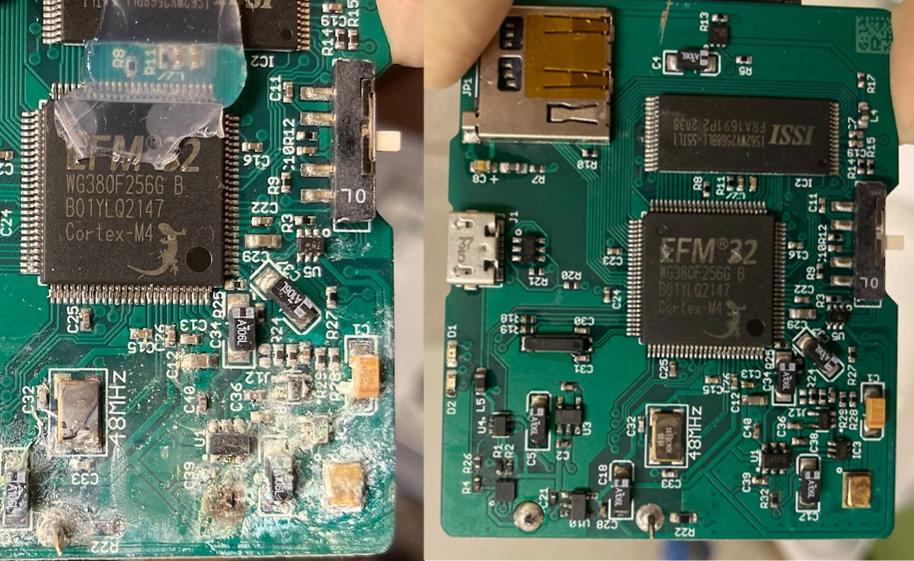
Technical Officer – IMOS Animal Tracking Facility
7 February 2023 12:30pm
Commercially available connected audio sensors
2 February 2023 3:08pm
2 February 2023 3:55pm
Hi!
I am not aware of any such connected loggers/recorders but they would be nice.
The AudioMoths have been revolutionary in providing audologging at a low cost but they take a lot of "data muling" (carrying SD cards in and out of the field sites) and swapping of batteries.
Cheers,
2 February 2023 7:50pm
Hi Lars, thanks for the response. We are using lots of Song Meter Micro's atm and they have proved to be resilient. Just need something which doesn't involve going on site regularly - but get the data off.
3 February 2023 7:04pm
Rainforest Connection's (RFCx) Guardian devices may be of interest. They are solar-powered and have connectivity options for Wifi, GSM and satellite transfer. They've previously been used for detecting e.g., gunshots or chainsaws (using edge computing) and then sending positive detections/alerts to folks on the ground. RFCx also hosts Arbimon, a free, no-code software platform that facilitates analysis of audio data as well. Happy to chat more if you'd like to talk further about it!
Job: Building a network of conservation tech across continents
2 February 2023 1:50pm
Consultancy opportunity: Wildlife monitoring specialist
31 January 2023 11:26am
AI for Forest Elephants Challenge
25 January 2023 3:34pm
Pandas & Prose with Karen Bakker and David Thau
19 January 2023 11:55pm
Apply Now: AI for Conservation Office Hours
18 January 2023 5:15pm
International Congress for Conservation Biology
16 January 2023 2:53pm
Potential collaboration: integrating acoustics and NASA airborne remote sensing to monitor animal and habitat biodiversity
30 November 2022 1:17am
10 December 2022 6:18am
Although not a professor, I know a fair number through long-term association with scgis.org, and personally am using Audiomoths in collaboration with the UC System at the Blue Oak Reserve.
Blue Oak Ranch Reserve
Blue Oak Ranch Reserve (BORR) lies within the Upper Sonoran Life Zone. Approximately two-thirds of the site is drained by tributaries of Arroyo Aguague, itself a tributary of Coyote Creek (via Penitencia Creek), which flows into southern San Francisco Bay.
I've developed a fair bit of scripts to automatically crunch things using 'Birdnet', as per:
GitHub - birdnet-team/BirdNET-Analyzer: BirdNET analyzer for scientific audio data processing.
BirdNET analyzer for scientific audio data processing. - birdnet-team/BirdNET-Analyzer
I can certainly facilitate dialogue with the Cornell Ornithology lab if you do not have those connections already.
My own background is in remote sensing (SAR, etc) and currently working in machine learning (albeit for health care currently..) this project sounds fascinating!
Are you already working with Audubon, and/or people in the UC System?
10 December 2022 6:22am
I'll also note that I'm planning to work with a few parks in the DRC/Congo basin to deploy Audiomoths alongside their camera traps.
13 January 2023 12:24pm
Dear Antonio,
It is a long-shot, but this may be relevant to what you are looking for? I have collected across 4 seasons (2022) 8-10 days/season acoustic data from 11 stations located at pine forests of different post-fire regeneration stage (>20 years since last burn, burnt in 2001, 2009, 2018) in Greece. These are typical Mediterranean forest pine landscapes - but certainly not in California or South Africa. We did not have plans at present to continue collecting data - since we got all seasons of one year, but may be the existing data or future data from these or similar areas here in Greece would be relevant to what you wish to accomplish with the airborne measurements?
Feel free to drop me a line.
All the best,
Christos







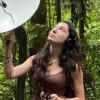





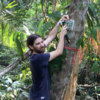







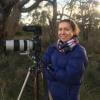




















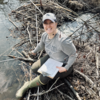


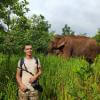







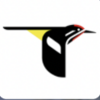






28 March 2023 9:37pm
Have you considered Arduinos?